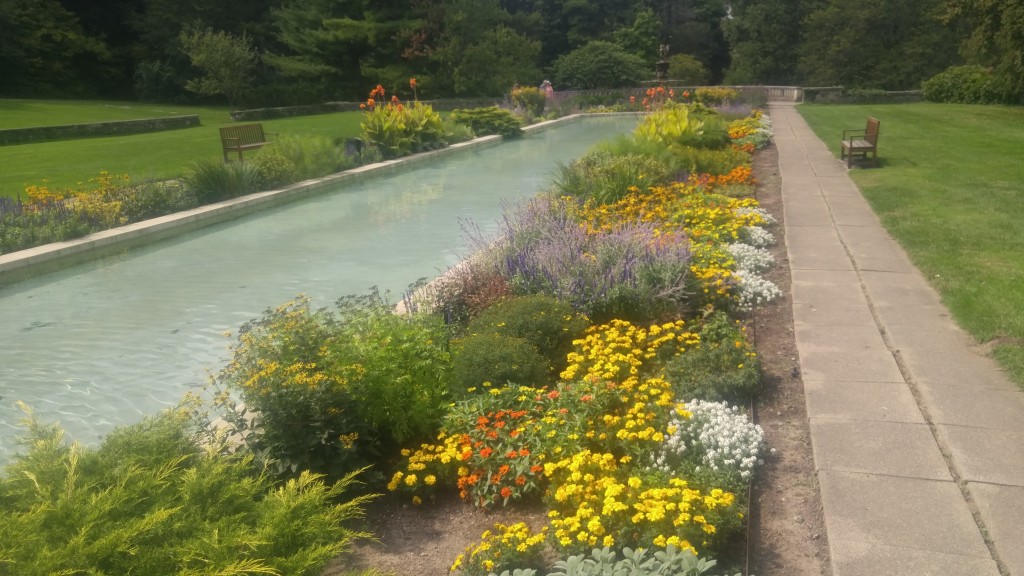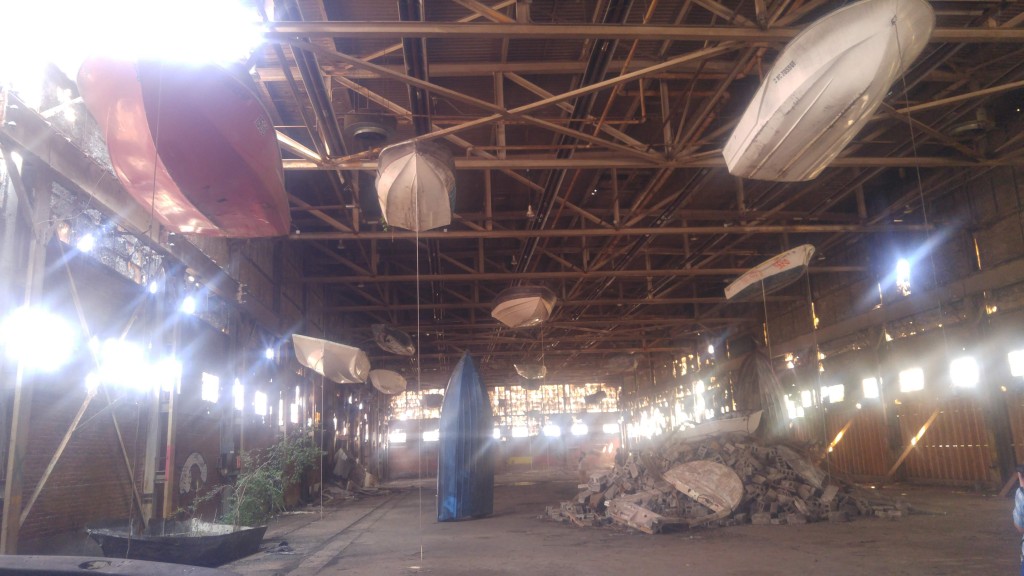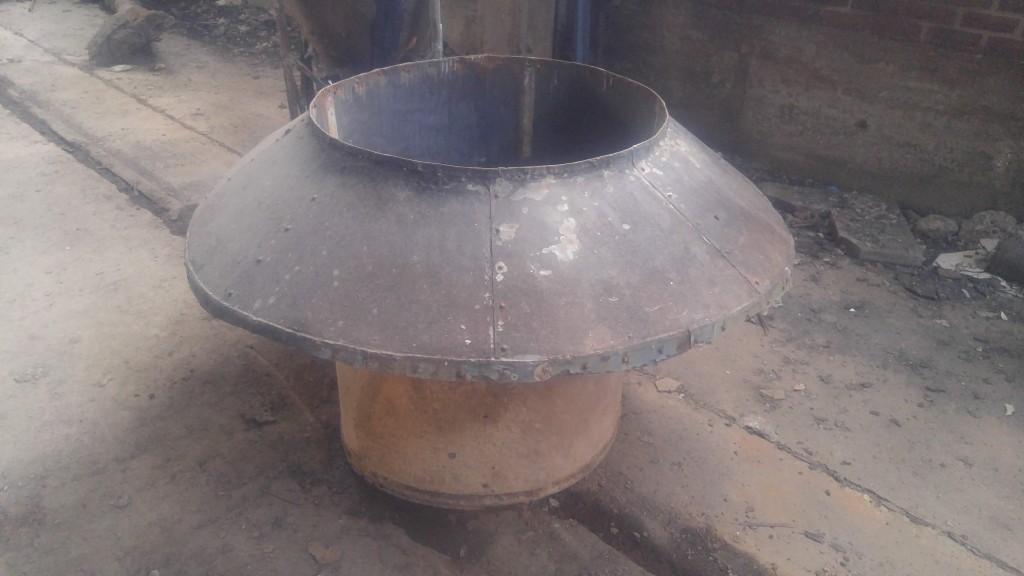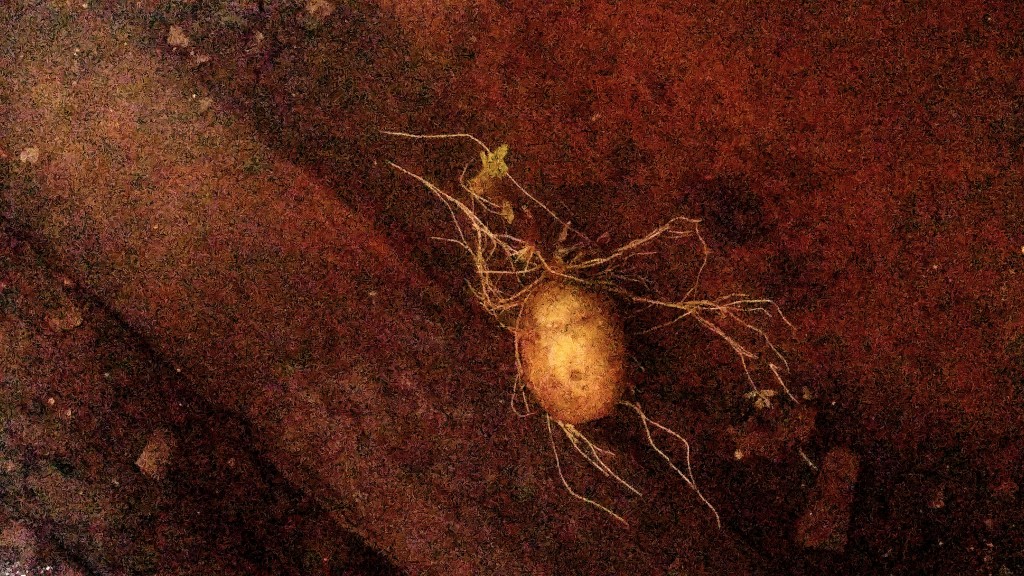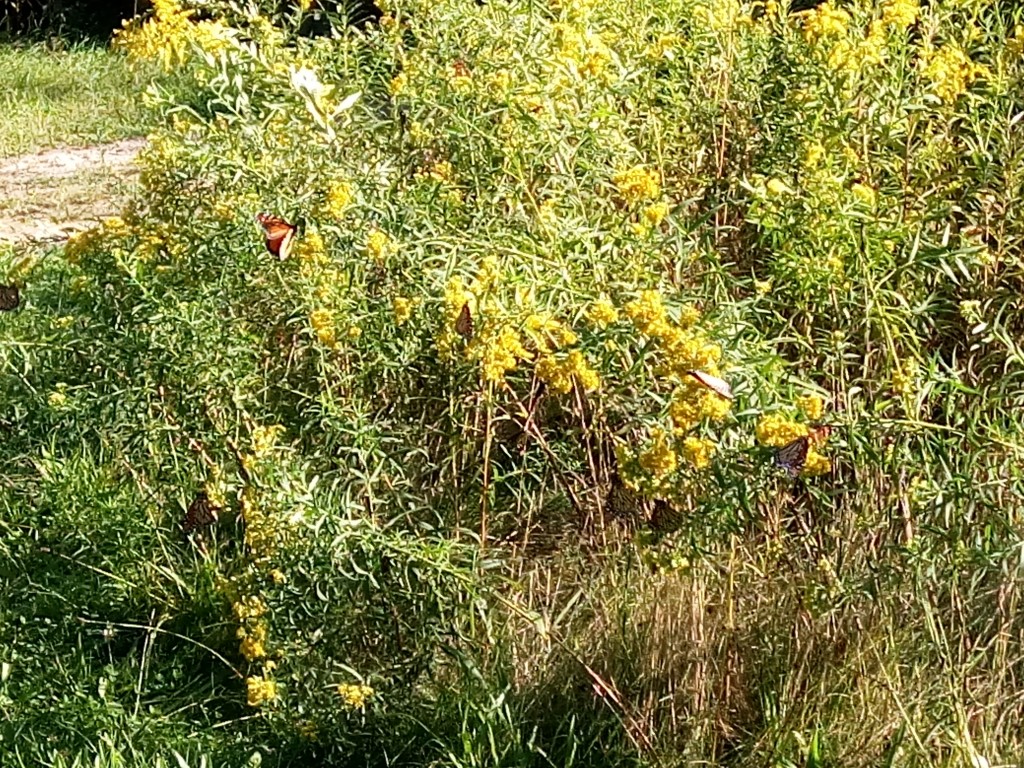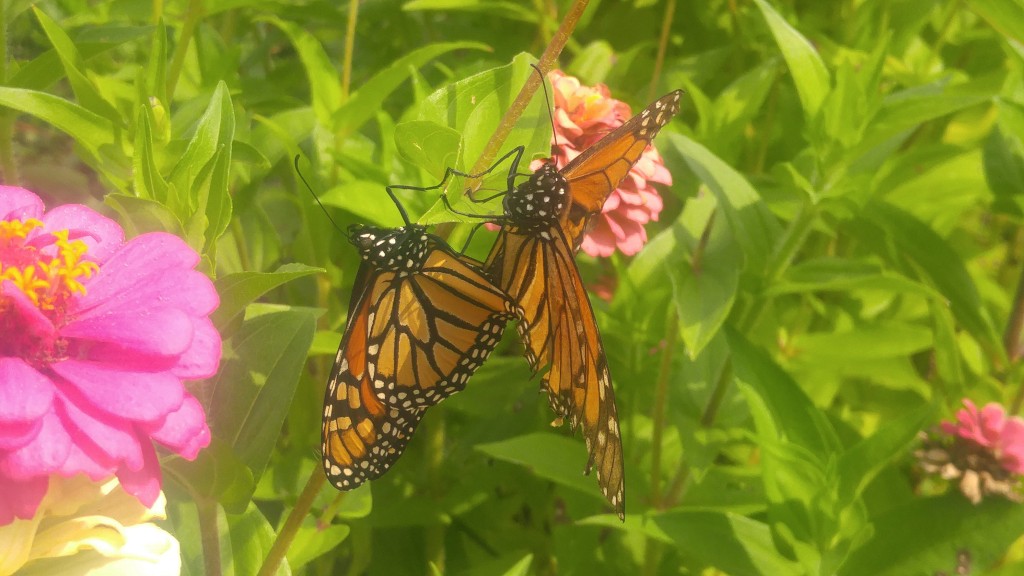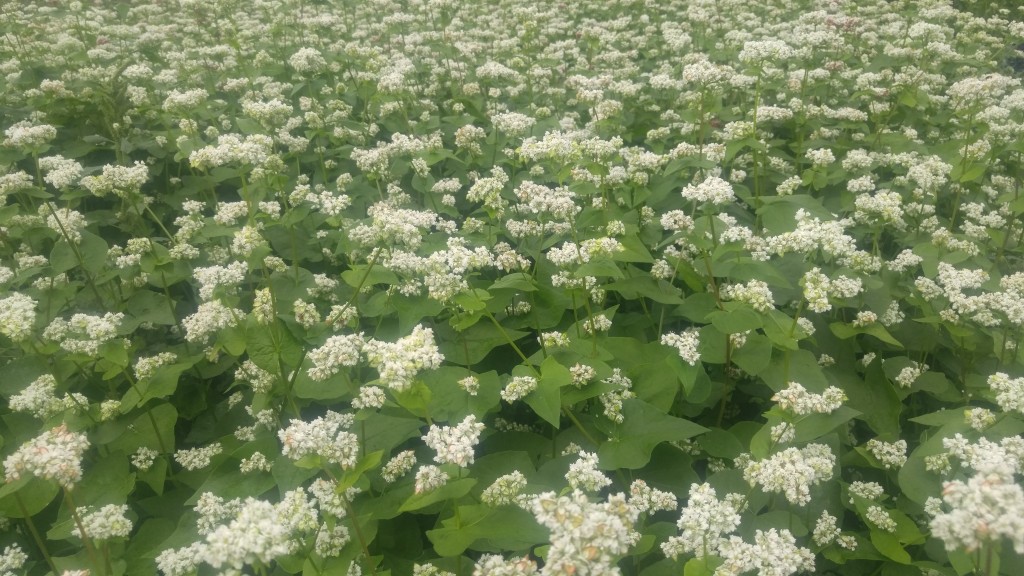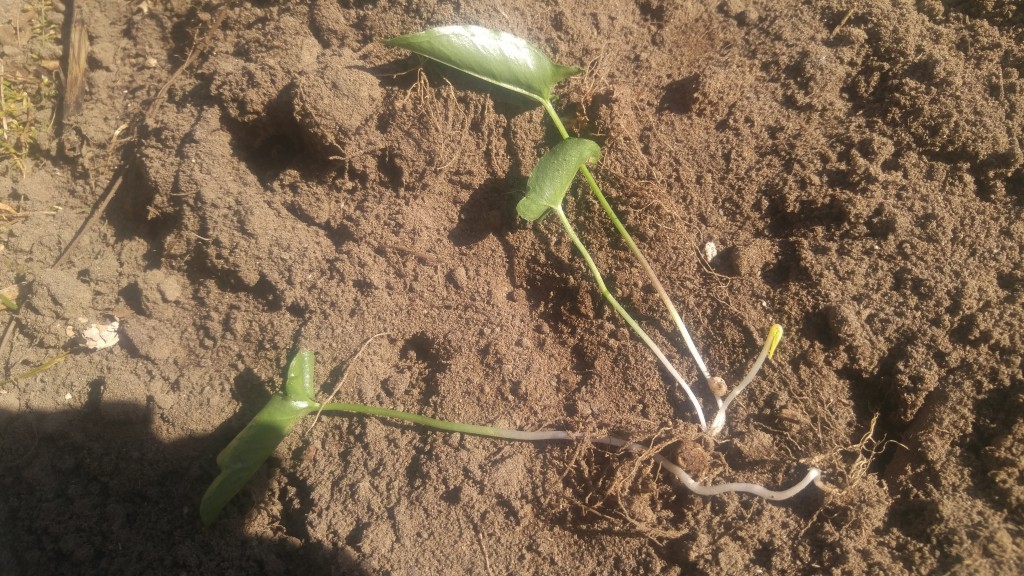This past weekend my daughter Robin and I visited the Cranbrook Art Museum in Bloomfield Hills. We took in the show entitled “Landlord Colors”. As you would expect from Cranbrook, it was a top notch exhibit.
The museum’s setting is quite impressive too. Rolling terrain is punctuated by gardens, statuary, and water features. We were on a tight schedule but took some time to walk around the area near the museum. In addition to the gardens adjacent to the building, there are hidden surprises along walkways and trails.
Cranbrook also has related “Landlord Colors” art installations in Detroit and one of those was on our itinerary for the day. We drove over to a spot near the Chene Park area to see Scott Hocking’s installation “Bone Black”.
Hocking, a Michigan native, often creates large-scale art work, so large in fact that he uses forklifts, cranes and other pieces of industrial equipment to install them. This work, installed in one of the city’s vacated factory buildings, lived up to its promise. It’s comprised of thirty three derelict speed boats suspended from the building’s steel roof-truss structure. Other sundry, industrial cast-offs dot the floor space to complete the effect.
After enjoying the Cranbrook art exhibit and spectacular gardens, absorbing Scott’s oversized art statement was quite a contrast.
In amongst this huge installation, Robin spotted one humble thing that sort of resonated with me — a small potato plant. It was growing inside a five foot cylindrical, roof vent-like assembly that was resting on the factory floor. We had to look down, over the wide edge the cylinder to find the hidden plant. The potato plant had the beginnings of a well-developed root system and a six inch sprout growing from a two inch tuber. Holes in the roof had let in enough rain water for the plant to grow. A thin layer of dirt left over from the factory shut-down provided a substrate for the roots.
Robin and I asked Scott if the potato was one of his trademark whimsical objects that he often hides in his work. He laughed and said no, it wasn’t him that put it there. He went on to tell us a young family visited the installation a while back. The mom was carrying her baby while walking through the building. As they were leaving, the mom told Scott her baby had tossed a potato into the aforementioned structure and hoped it wouldn’t cause a problem. Scott told her not to worry since it was too far down to reach and nobody would see it there anyway. We all had a good laugh at that story.
On our drive back home Robin and I wondered out loud, what was a baby doing carrying around a potato?
Bob
